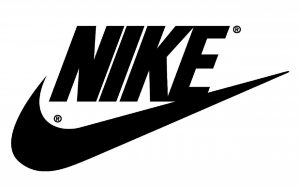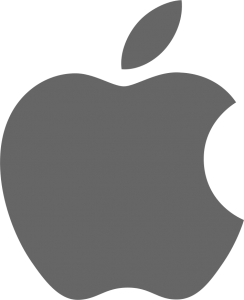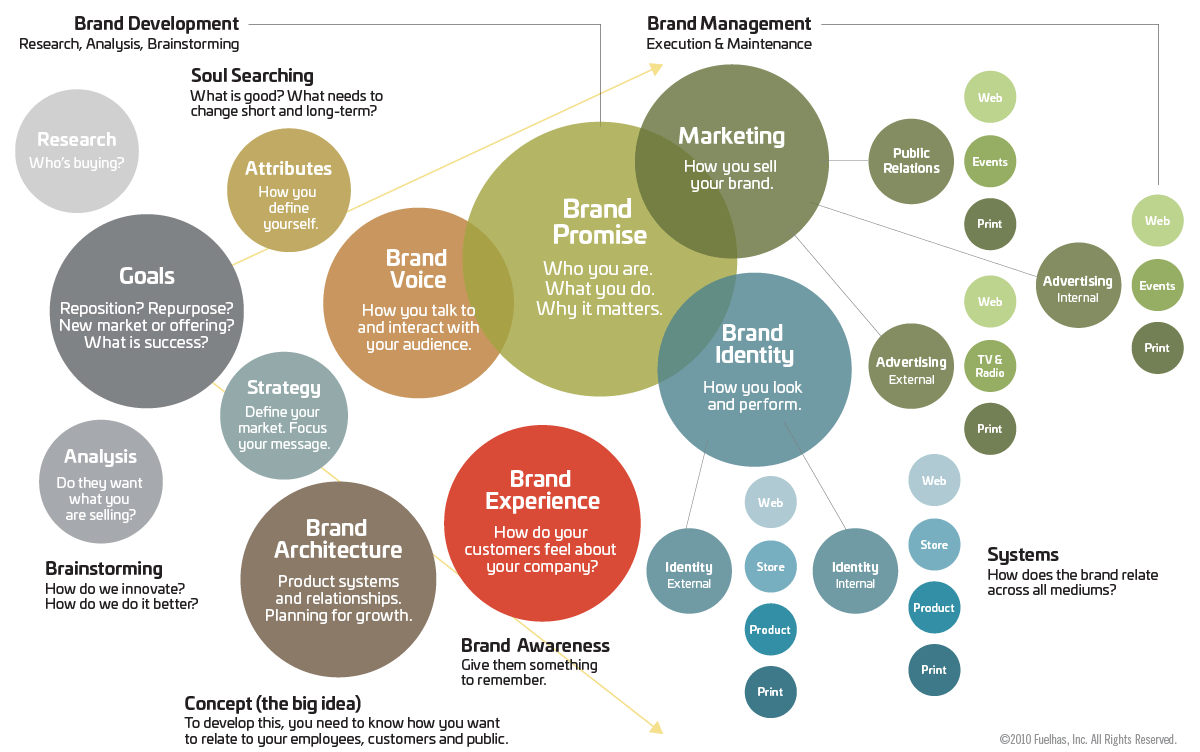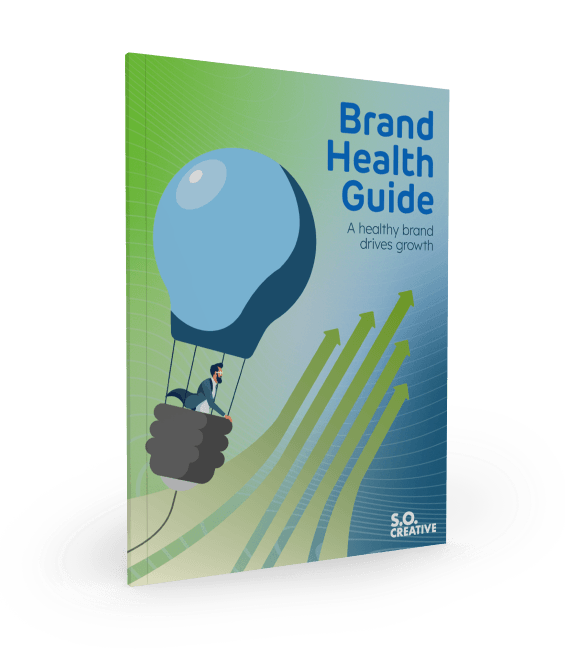So your company has a logo and a website, and you have a steady stream of work from a small, solid base of customers. Why do you need to spend money on your “brand”?
You don’t.
If you’ve achieved your goal of being a company with a logo and a website that has a steady stream of work from a small, solid base of customers, you’re set.
However, if your vision is based on growing your company beyond the whims of your market and its effect on your customers, you’ll want to invest in building a brand that can thrive in the ups—and still thrive in the downs.
Brand development is the process your company undergoes in order to plan, build and maintain your brand. It is one of the most important things you can do for your growing company. Or your grown company. Or your just-starting-out company.
Developing Your Brand is Developing Your Company
Your brand is every touchpoint between your business and the rest of the world. Your logo, your website, your business card, your social media presence, the way your employees answer the phone, the way your warehouse employees act, and on and on. There are dozens—and each one, potentially, has an affect on your business. A strong brand can help your business grow. A weak brand will help it tank.
A Few Examples
Granted, the following brands have more money than your business. They have more money than most businesses, which just goes to show how a strong brand can help your business grow.

Amazon:
Remember when all Amazon did was sell books? That was back in 1995. Now they sell everything. How did they grow so big so fast? They committed to a brand development plan and stuck to it. At the heart of it was great service and a very pleasant customer experience. That’s never changed.
Secondly, Amazon does an amazing job of continuously supporting and updating their brand. Books to music to household items to groceries to entertainment content to AI. They’ve made innovation a core aspect of their brand, without sacrificing their core brand values.
How is your business’s customer service? What kind of experience do your customers, employees and vendors have? Remember, they are all talking and there are people out there reading—and often times what they see is what they consider the truth, whether it is or not.

Nike:
Most think that Nike started as a shoe company. That’s not entirely accurate. Nike began as an athletic performance company. And they never changed that basic value. They actually made it stronger. From a shoe that helped a track and field athlete perform better to a worldwide subculture still aimed at helping athletes (and non-athletes) perform better.
Another thing Nike does well is co-branding. They have associated their brand with the top performers in virtually every sport in the world.
Who is your business associated with? Are they a compliment to your business? To your brand?

Apple:
Everyone uses this as an example. It’s hard not to as they have gone from The Apple Computer Company in a garage in California to the most valuable brand in the world. The most important thing to examine from a brand perspective is evolution. Apple did (and continues to do) it better than anybody. Steve Jobs and the boys realized early on that they weren’t a computer company—they were a lifestyle company. They started to build computers to accentuate people’s lives, not to crunch numbers and process words. They let Microsoft have that. Then they developed something to help people enjoy their lives while they were using their computers even more—digital music. Then smartphones. Then AI. Always providing their users something that would make their every day more enjoyable.
And you’ll notice that Apple rarely discounts their merchandise. Retailers might, but Apple is rarely the least expensive option. That’s because Apple has built their perceived value. Despite Samsung actually selling more phones during the last months of 2017, Apple still managed to receive 87% of total smartphone profits.
Customers think, “Yes, Apple is more expensive. But it’s worth it. Because they always have good stuff; they support it really well (Genius Bar) and it all works together really well. I need to get this iMac/iPod/iPhone/iPad because my life will be soooo much better.”
So, is your company able to charge a premium for your services and products? Are your services and products so amazing that your customers can’t operate without them? Are you out there in your customers’ world being a thought leader? Are you the smartest people in the room?
You’re Not Amazon, Nike or Apple.
But You Might Be GTC.
GTC Technology is a global licensor of process technologies. They offer engineering services, process equipment solutions, chemicals and catalysts to the chemical, petrochemical, refining and gas processing markets. While the company has been established for years, they were perceived as a small niche technology provider and struggled with brand awareness, which limited their ability to participate in the RFP process. So we helped them re-engineer their brand, strengthen their touchpoints and customer experience and make a stronger impression with decision makers.
In three months time after the launch of their new brand, GTC’s brand awareness within the market has increased and seen appreciable interest in their high-dollar offerings. Additionally, they’ve experienced a 67% increase in web traffic and 350 whitepaper downloads. And don’t be surprised if you see them on the same RFP list as you—they were invited to submit 19 new quotes in the first three months after the launch of their new website and ad campaign.
Read the whole GTC story here.
Brand Development for You.
Now that you see how valuable brand development can be, let’s look at how we can do it for your company. How will your brand develop into a strong and successful standard for your company? We’ve created a process that will help you assess your company from top to bottom, examine the world in which you operate, get to know your customers better, and create a plan for building the critical touchpoints to support your brand now, as well as the ones for supporting your business as it grows.

Explore our Brand Development Chart, which will help you see how The Psychology and The Science of branding can help grow your company.
The first phase—what we call The Psychology—starts with planning:
- Research: Who’s buying? This is where you consider your target market and their demographics, competitor reviews, a visual audit, a message review, business strategies and a budget review.
- Analysis: Do they want what you’re selling? This is determined through focus groups in the audience, sales figures, market changes, new product offerings, business strategies and brand extensions.
- Determine the goals: Reposition? Repurpose? New market or offering? How will you define success?
For the next steps, you’ll need to do some soul searching. What is good? What needs to change short and long-term?
- Determine your brand attributes: How do you define yourself?
- Strategy: Define your market. Focus your message.
- Solidify your brand architecture: Product systems and relationships. Planning for growth.
Now it’s time to determine your brand concept (the big idea). To develop this, you need to know how you want to relate to your employees, customers and general public. The concept will drive the following:
- Brand voice: How you talk to and interact with your audience
- Brand experience: How do your customers feel about your company?
- Brand promise: Who you are. What you do. Why it matters.
- Brand awareness: Give them something to remember.
There are two lenses through which we view a brand—The Psychology and The Science.
- Science is driven by the research, which is the strategy/backbone. It creates a spine that the creative is built on. It guides the creative psychological component.
- Psychology is how the brand looks/feels/sounds. It is what drives the emotional response and It represents the creative components of a brand.
Then it’s on to the second phase—what we call The Science—which includes:
- Brand Identity: How you look and perform. This is for both internal and external audiences. You want to define your identity systems and ensure that the brand is consistent and relates well across all mediums.
- Marketing: How you sell your brand. There are three main buckets of marketing channels, within which there are many possibilities:
- Public Relations: Web, Events, Print
- Advertising – External: Web, TV & Radio, Print
- Advertising – Internal: Web, Events, Print
Let’s Start Planning Your Brand Development
There’s a lot more to building a strong brand, but hopefully you understand just what a valuable tool it can be for the growth of your business. If you are ready to start down the path to a stronger, more valuable brand, reach out.
According to the CMO Survey, marketing is responsible for leading revenue growth at 38.4% of companies.
Is your company marketing itself the best it can?

